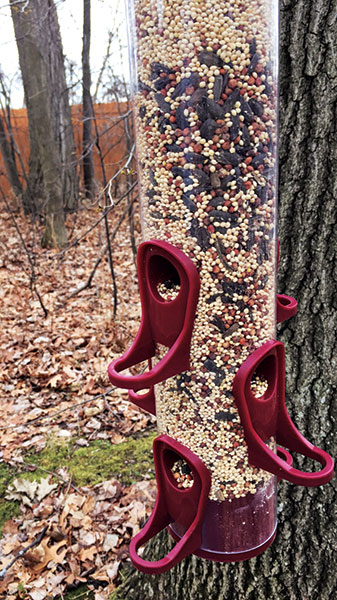
Bird-watching is preferable to Indianmeal moth-watching, but sometimes you get more bang for your buck.
Photo: Mark Sheperdigian
Bird feeders are a common fixture for homes because so many people enjoy watching birds. Unfortunately, the feeders serve a lot of other animals, including some undesirables. I’m not even talking about squirrels, which are welcome wildlife for some and persona non grata for others. In fact, there are many records of epic battles between bird enthusiasts and the amazing fox squirrel (Sciurus niger), but few where the squirrel loses.
Less well known are a number of common household pests supported by backyard bird feeders. For example, bird seed is a particularly susceptible commodity to Indianmeal moth (IMM, Plodia interpunctella). If you deal with bird seed facilities, you can attest to this. Most people buy bird seed in quantities beyond one season’s need and store it securely — in a plastic trash can in the garage. After a season or two in these less-than-ideal conditions, IMM move in or the mice gnaw through the plastic container and hoard their newfound fortune in one or more undisclosed locations. And, yes, IMM or other stored product pests may find those as well.
Have you ever been to a home with an IMM problem and pheromone traps that always seem to have a moth or two, even though no infested foods are ever found? This is only one possible bird feeder-related explanation. Another possibility is that the moths are coming from the bird seed in the neighbor’s garage, attracted by the pheromone traps. The only known solution is to remove the traps.
The lesson here teaches us to keep an eye out for bird feeders and ask about bird seed storage. Recommend they buy small amounts and store it in tightly sealed, rodent-proof containers.
I can’t help them with the squirrels.
Contributor Mark Sheperdigian, BCE, can be reached at shep@rosepest.com.
Leave A Comment